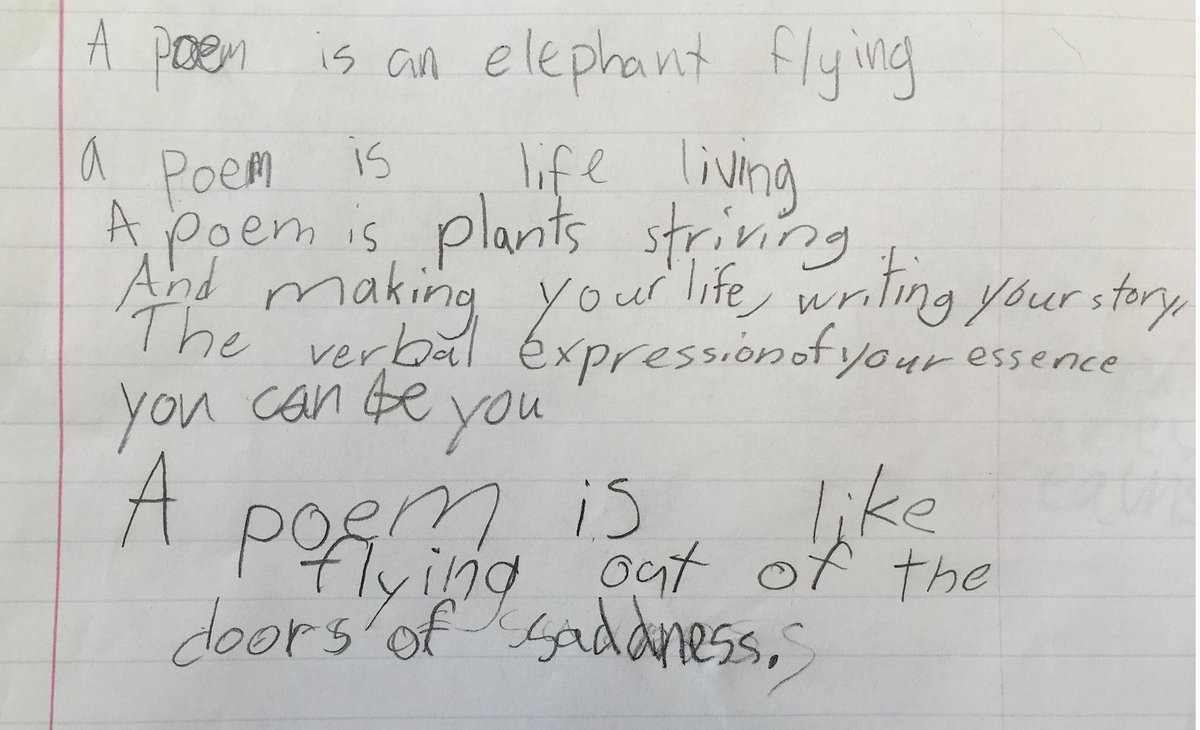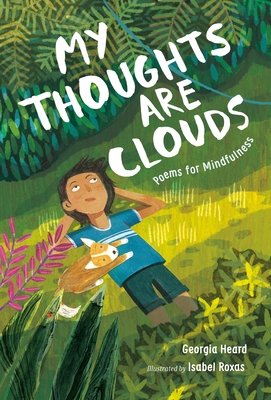April is National Poetry Month
Happy April or National Poetry Month! Poetry is something to infuse into your classroom (and life) everyday, but if you don’t have time to teach a standalone poetry unit, you can use it as a morning greeting, introduction to a topic or subject, or a way to share information. There are so many different types of poems. We don’t have a poetry unit as part of our 3rd grade curriculum, but we make sure to have plenty of poetry books in our classroom. I’ve learned that students who read one novel in verse often want to try others, so I always include them on my “teacher recommendations” shelf. Novels in verse also make wonderful read alouds, too. They sound beautiful when read aloud and are relatively quick reads.
Here are some ideas for teaching poetry that we shared in 2019. Many of these could be standalone lessons or part of a larger poetry unit.
In the past, Gabby read This is a Poem That Heals Fish by Jean-Pierre Siméon (translated from French) to our 3rd graders and asked them to write their own poem starting with, “A poem is..” as many characters in the book do. She played music while they were writing, and when the music stopped, students rotated to a different desk and continued that poem. The results were lovely, hilarious, and sometimes surprisingly dark (see the cover photo for an example). It was a fun activity that would work for an introduction to a poetry unit, National Poetry Month, and building collaboration or thinking about different writing voices. You can read more about the book and see some of the beautiful illustrations here.
Here are some other new (ish) books for National Poetry Month:
Kiyoshi's Walk by Mark Karlins is another beautiful resource for introducing poetry or thinking about where to find writing inspiration. A child asks his grandfather where poems come from, and his grandfather helps him find out by taking him on a walk around the city!
Unsettled by Reem Faruqi (yes, I can’t stop recommending books by Reem Faruqi!) is a must for the classroom. Nurah moves to Georgia, USA with her family from Pakistan and the novel follows the ups and downs of their big move. Nurah loves her family, swimming, and art. She’s thoughtful, determined, and brave, an excellent MC. Through her eyes we see the ups and downs of other characters’ lives too from colorism/xenophobia/racism, relationship physical abuse/ bullying, miscarriages, and mental health( depression, Alzheimer’s). All of these pieces are included in a way that felt both real enough, but still light enough for middle grade— which is a true feat in itself. (I’m quoting from Gabby’s Goodreads review as this book is still on my “to read” list!).
My Thoughts Are Clouds: Poems for Mindfulness by Georgia Heard is another book on my “to read” list, but it looks beautiful and very helpful for everything we are all managing in the classroom right now!
Mii maanda ezhi-gkendmaanh / This Is How I Know by Brittany Luby and illustrated by Joshua Mangeshig Pawis-Steckley is a bilingual Anishinaabemowin and English book showing how a young girl and her grandmother know when a new season is starting. This book is also on my “to read” list, but seems like it has potential to be a wonderful mentor text. The author is of Anishinaabe descent and the illustrator is of Ojibwe descent.
Samira Surfs by Rukhsanna Guidroz is another middle grade novel in verse on my “to read” list. Samira is a twelve-year-old girl who is a Rohingya refugee. She and her family had to flee their home and are now living in Cox's Bazar, Bangladesh. Samira starts learning to surf, but has to overcome many obstacles to do so. The book includes an author’s note explaining the situation in Myanmar. I want to read it myself as it sounds like it has so much potential for a read aloud and something to recommend to my students.
The Last Straw: Kids vs. Plastics by Susan Hood is yet another book I still want to read, but the excerpts I’ve seen include lovely nonfiction poems about kid activists fighting to protect the environment. Plus, the book includes a timeline, author’s note, further resources, and more to encourage students to keep learning. Seems like a great book for Earth Day or everyday.
Happy reading and writing!







